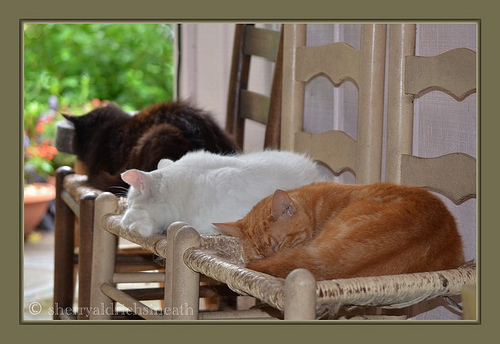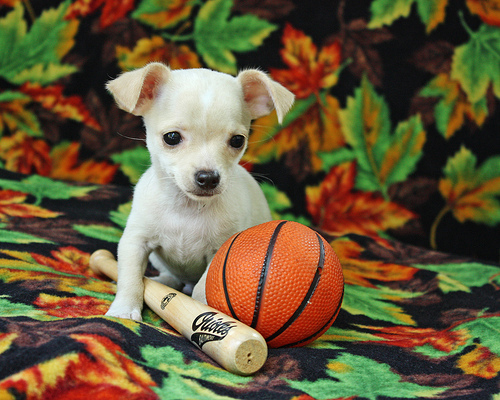Tuesday Tips: Nonfiction Proposal–The Format

My furry muse--he's in the Aging Dog book (yes he was almost 13 in this picture).
Today I continue my series on nonfiction book proposals. Over the next several Tuesday Tips I'll continue to cover some of the meat-and-potatoes of choosing topics, researching ideas, and putting together a winning nonfiction book proposal. While I write primarily about pets, the same ingredients for your nonfiction book stew are the same–it's just the seasoning and presentation that may vary.
The first week discussed the IDEA TREE followed by topic choice including where to find ideas and decide if they're viable. The third covered passionate picks and bio building–and then the holidays happened, so I took a week off. The next installment covered to query or not, what goes in a query or cover letter and how to approach an editor/agent. We've dissected the nonfiction proposal to find out the components and got up-close-and-personal with the nonfiction proposal OVERVIEW and the COMPETITION/MARKET SURVEY. Today the discussion is short and sweet, and focuses on the format.
FORMAT, HUH?
What do I mean by format? Doesn't the publisher decide how the finished book looks? Well . . . yes. But some of y'all will be your own publisher.  And those who submit to the traditional venues will do yourself a big favor and win furry points by already having a vision.
And those who submit to the traditional venues will do yourself a big favor and win furry points by already having a vision.
This is for the PROPOSAL, though, so remember don't get too attached. Publishers and editors always like to put their own spin on things. But it will be helpful to your writing process, too, to have an idea about organization and the finished book. It's enough to list what you intend to do, and offer examples in your samples. These are the three things you MUST include:
BOOK LENGTH
Yes, that's sort of a "duh" suggestion. But it is important if only to show your editor/agent that you know what the market will bear. For nonfiction books, the average word count ranges from 65-90,000. It can go WAY MORE for reference books (how many words in the dictionary, I wonder). It can go much shorter for kids nonfiction. Know your market. If you propose to write a nonfiction book for middle school students and already have 80,000 words, that will tell the editor to send a not-so-gentle "No thanks."

Thankfully, it's easier to organize a book than cats. (Copr. Sanskrtlady)
ORGANIZATION
If you're already writing the work, you should have an idea about the organization of your proposed book. There are some standards, of course, and it's pretty easy to use a fall back position. For instance, you could simply say,
"My proposed book will be organized into 24 chapters, and include an index with a further reading list."
But why not get creative? You can organize the book any way you wish–yes, it needs to make sense. But why not think a bit outside the box? Take a look at what's already out there and has been successful. Perhaps you can combine two or three approaches.
For example, my Aging Cat and " target="_blank">Aging Dog books combine several organization techniques from some of my other successful books. They are organized in Part I that contains 6 overview chapters, Part II has an A-to-Z list of conditions and symptoms, and Part III contains several appendices with sources, further reading, etc. This same format was used in my Pet First Aid and Pet Natural Healing books (I stole it from them!) but then added some extra spice . . . read on.

The style says something about your personality, too! (Copr. RickieBPhoto)
STYLE
This is where you get to explain a bit about your author voice and how you'll present the information. That will depend a great deal on your audience. For children's books or for inspirational works a dry technical approach probably won't work. But a narrative conversational style might be perfect. I've also seen very successful nonfiction works use a Q&A style with either real–or created–questions that the author then answers.
Nonfiction lends itself to bulleted lists and charts that make the information more accessible. Will you use these? What about pictures or illustrations? Will you have breakout boxes with special features? Again, in my "aging pet" books I used several running "theme" boxes throughout the book with small snippets of information. For example, "Comfort Zone" boxes discussed appropriate products for specific issues–like doggy diapers for incontinence. "Feeding For Health" listed therapeutic diets available for different illnesses. There's also Senior Symptoms, Nurse Alert! and my favorite–Golden Moments, which are Chicken-soupy true stories of dogs/cats that experienced and happily lived with diabetes, for example.
You can become creative with how you plan your book. Keep in mind that photos and illustrations raise the cost of publication if you're targeting traditional markets. Publishers often require you to fund/acquire photos yourself.
Next week the topic will be more on author promotion and the author bio. Do you have any questions that I've not yet covered? Fire away! We've only a couple more installments to go, and I want you to have that proposal shiny-ready to go!
I love hearing from you, so please share comments and questions. Do you have an ASK AMY question you'd like answered? Stay up to date on all the latest just subscribe the blog, "like" me on Facebook, listen to the weekly radio show, check out weekly FREE PUPPY CARE newsletter, and sign up for Pet Peeves newsletter with pet book give-aways!
Filed under: Writing Advice & More Tagged: Amy Shojai, cat books, dog books, how to write a nonfiction proposal, pet books, writers conference, writing, writing advice, www.amyshojai.com











